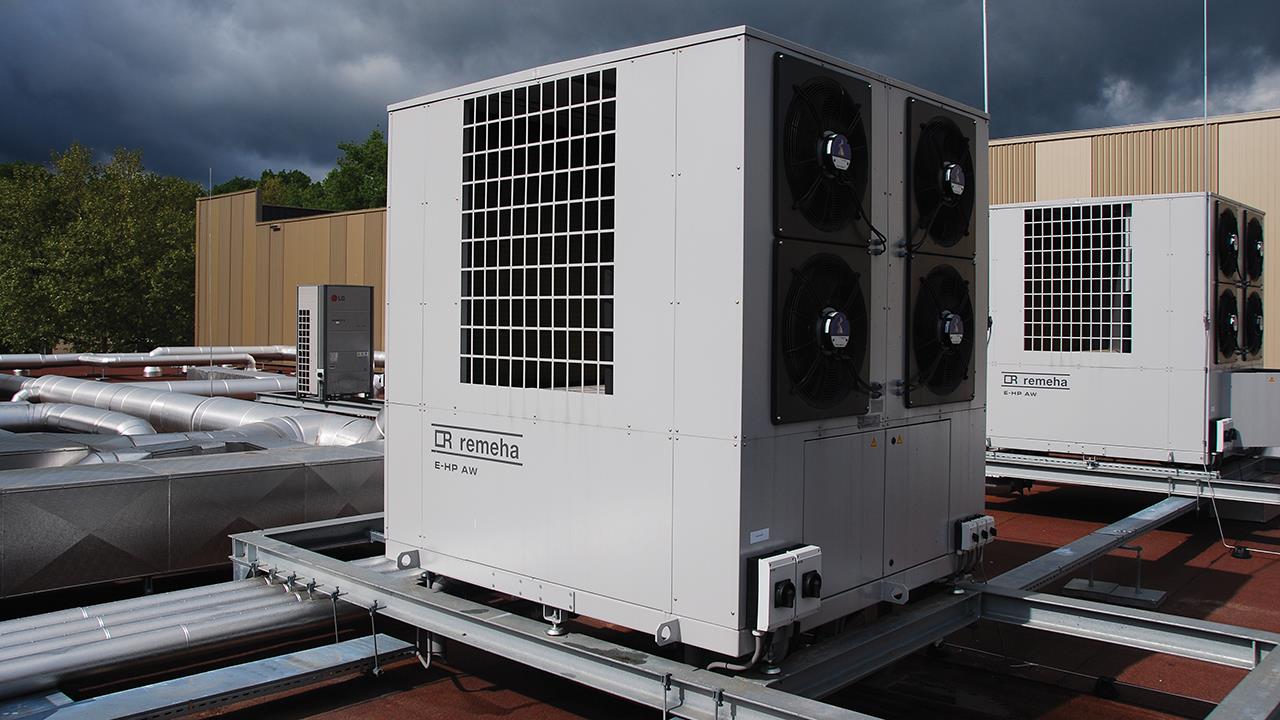

How we heat our buildings has to change if we are to meet our legally binding 2050 net-zero target. With no silver bullet for decarbonisation, this is a huge challenge for the heating industry. What’s more, as energy costs continue to rise, the need to prioritise performance takes on added weight to ensure lower costs, as well as carbon emission reductions, for our customers.
It’s well established that low carbon heat pumps have a major role to play in the energy transition, particularly in buildings designed from the ground up to use low temperature heating effectively. We see air source heat pumps (ASHP) as the most popular and cost effective choice of heat pump.
But here’s the problem. Low carbon technologies perform best in well-insulated buildings and at low operating temperatures. So, when we look to retrofit air pumps in older commercial premises, there are likely to be a whole range of retrofit challenges.
Antiquated heating and hot water systems that operate at higher temperatures, poor insulation, space restrictions, insufficient electricity supply, and limited budgets are just some of the restrictions that will need to be addressed.
All of which leads us to conclude that it’s unrealistic to think that we can engineer all projects and budgets fully with just ASHPs at present.
Phased refurbishment programme
Nevertheless, action is needed now to heat our commercial building stock more sustainably. So, how do you design around these limitations?
In harder to heat commercial buildings, one solution is to deploy a hybrid heat pump system that combines high efficiency new or existing condensing gas boilers or water heaters with an electric ASHP. Hybrid systems are proven to reduce both heat-related energy consumption and emissions which will help businesses meet their sustainability goals.
However, the building and heating system must be made ‘heat pump-ready’ first. A fabric-first approach is typically the first step; the aim being to reduce heat losses and lower energy demand. Ensuring an energy efficient heating system is also key. This is often achieved by upgrading any non-condensing boilers or water heaters to condensing models.
Once the building and heating system have been brought up to code, the ASHPs and condensing boilers or water heaters can be integrated in a hybrid system.
Maximising heat pump performance
The challenge now is to design the system in such a way that it maximises heat pump contribution performance, while taking into account project limitations. A hybrid system working in perfect balance should only use condensing boilers to overcome limitations imposed by operational factors, and to ensure building performance at all time.
Flow and return temperatures, Delta-Ts, controls, and the detailed hydronic design all need to be carefully considered when blending the technologies. Trusted manufacturers should be on hand to provide useful advice – after all, they not only know their products but also how to maximise their efficiency and effectiveness – helping to address and avoid any conflict.
They can provide valuable support on a practical level too, for example offering pre-packaged rig and/or a full turnkey-enabled plant room to overcome space constraints.
Pathways to net-zero
Where standalone, purpose-designed ASHP systems are not an option, hybrid heat pump systems offer the opportunity for important efficiency gains and emission reduction in existing commercial buildings.
Diversifying energy sources in this way can provide businesses with greater energy resilience and security. It’s worth remembering that the sustainability of hybrid heat pump systems will increase further, with a blend of up to 20% hydrogen into the natural gas mix potentially being implemented, possibly as soon as next year.
Projecting further ahead, today’s low NOx and 20% hydrogen blend-certified condensing boilers will eventually be replaced by hydrogen-ready and pure hydrogen boilers to achieve full decarbonisation of heat.
But, crucially with hybrid heat pump systems, it’s essential to consider the optimal operational design conditions of both technologies, including the hydronic design, to maximise heat pump utilisation while maintaining system performance and overall efficiency. By taking this holistic approach to heat pumps, we can ensure that both performance and practicality are prioritised at every stage.
If you'd like to keep up-to-date with the latest developments in the heating and plumbing industry, why not subscribe to our weekly newsletters? Just click the button below and you can ensure all the latest industry news and new product information lands in your inbox every week.